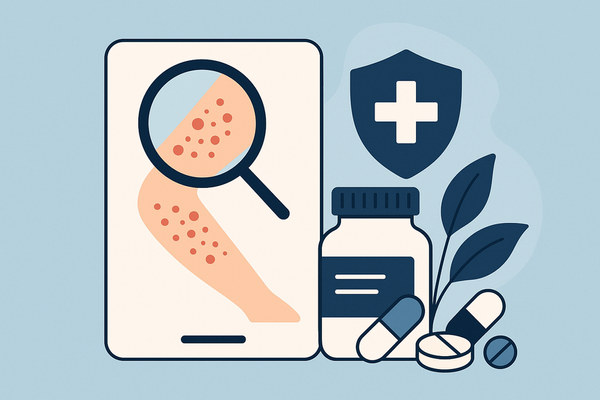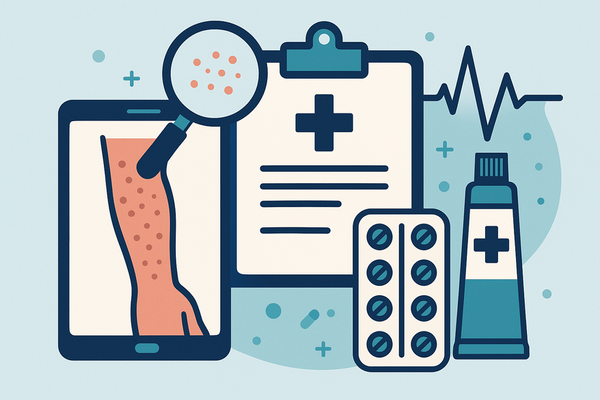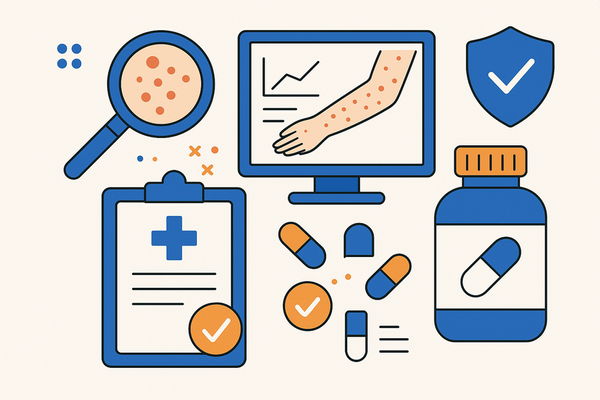Industrial Skin Care Rashes: Causes, Prevention, and Treatment
Learn about industrial skin care rashes, including causes, prevention strategies, and treatments, to ensure a safer workplace and healthier skin.
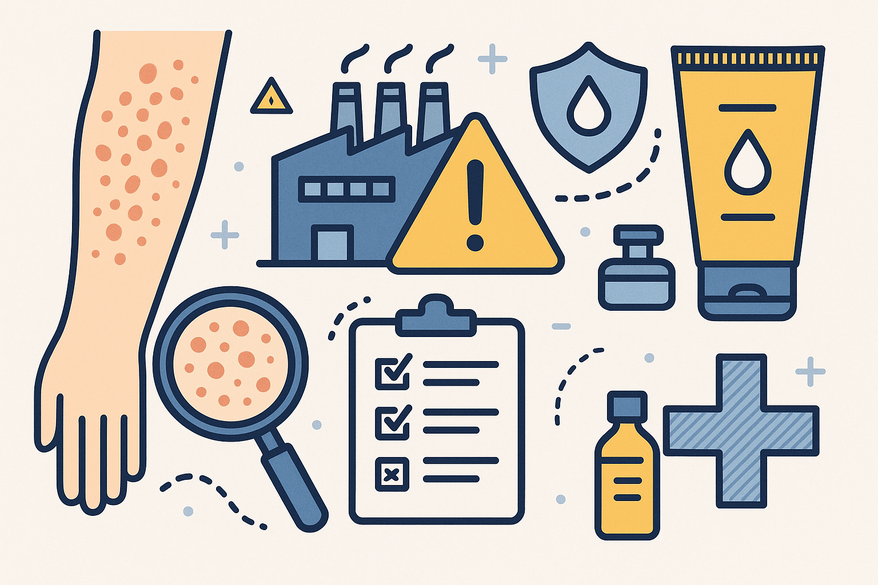
Estimated reading time: 8 minutes
Key Takeaways
- Types of rashes: Irritant and allergic contact dermatitis from industrial exposures.
- Common triggers: Chemicals, thermal extremes, and mechanical friction.
- Early detection: Regular self-checks and supervisor inspections prevent chronic damage.
- Prevention: Engineering controls, proper PPE, and consistent skin-care routines.
- Treatment: Immediate first aid, OTC remedies, and professional consultation for severe cases.
- Workplace policies: Training, SOPs, incident reporting, and employee engagement ensure compliance.
Table of Contents
- Introduction
- Understanding Industrial Skin Care Rashes
- Recognizing the Symptoms of Industrial Skin Care Rashes
- Prevention Strategies for Industrial Skin Care Rashes
- Guidance on Handling Industrial Skin Care Rashes
- Workplace Policies and Education on Industrial Skin Care Rashes
- Conclusion
Introduction
Industrial skin care rashes are inflammatory reactions—most commonly irritant or allergic contact dermatitis—triggered by workplace exposures in manufacturing, construction, or laboratory settings. They manifest as redness, itching, blisters, or scaly patches and can become chronic without prompt care. Left unchecked, rashes cause discomfort, increase infection risk, and impact productivity.
This post will:
- Define and categorize industrial skin care rashes
- Highlight common workplace triggers
- Explain how to recognize early symptoms
- Offer proven prevention strategies
- Provide first-aid and treatment guidance
- Outline key workplace policies and education steps
By following these evidence-based recommendations, workers and employers can minimize skin damage, ensure rapid recovery, and maintain a safer industrial environment.
Understanding Industrial Skin Care Rashes
Rashes occur when the skin’s barrier is compromised by repeated exposure to harsh agents. Two primary types dominate:
- Irritant Contact Dermatitis
– Non-immune reaction from direct chemical damage.
– Symptoms: dry, cracked skin progressing to redness, burning, and pain.
– Common irritants: detergents, solvents, acids, alkalis. - Allergic Contact Dermatitis
– Delayed hypersensitivity (Type IV) immune response.
– Symptoms: intense itching, redness, and vesicles at contact sites.
– Common allergens: nickel, epoxy resins, rubber accelerators.
Key contributors:
– Chemicals: degreasers, welding flux, solvents, latex compounds.
– Thermal extremes: cold fissures, heat-driven erythema.
– Mechanical factors: tool friction, metal shavings, abrasive powders.
Recognizing the Symptoms of Industrial Skin Care Rashes
Daily self-checks and supervisor inspections are essential for early diagnosis. Key warning signs include:
- Redness (Erythema)
Diffuse or well-defined red patches that worsen with exposure. - Itching (Pruritus)
Persistent urge to scratch, often intensifying at night or after work. - Vesicles and Blisters
Fluid-filled lesions that may ooze or weep in severe cases. - Dry, Scaly, or Lichenified Skin
Chronically exposed areas become thickened, rough, and papery.
Early Detection Tips:
- Inspect hands, forearms, and neck at shift end.
- Report new itchiness or redness immediately.
- Photograph evolving lesions to track progression.
For AI-driven analysis, try Rash Detector to distinguish irritant from allergic reactions quickly.
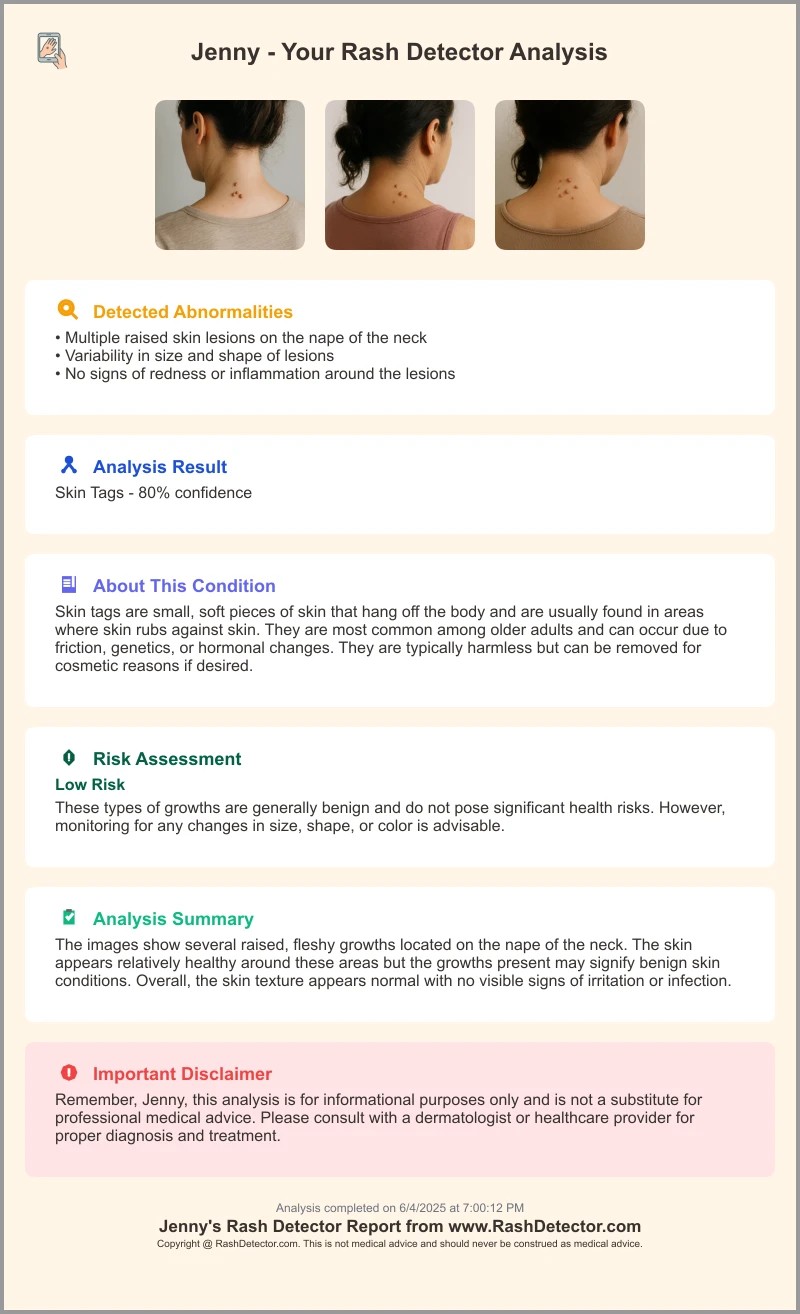
Prevention Strategies for Industrial Skin Care Rashes
Effective prevention combines engineering controls, PPE, and robust skin-care routines. For comprehensive guidelines, see Occupational Dermatitis Management: A Comprehensive Guide to Best Practices for Workplace Skin Health and Work-Related Skin Rash Prevention: Essential Strategies to Protect Employees.
Workplace Safety Measures
- Hazard Assessments
Map chemical-use areas and rank irritant potential; conduct quarterly skin inspections. - Emergency Facilities
Eyewash stations and safety showers within 10 seconds of chemical lines; clear signage.
Personal Protective Equipment (PPE)
- Glove Selection
Nitrile for solvents and oils; neoprene for acids; replace torn gloves immediately. - Additional Gear
Barrier creams (silicone or zinc-oxide), chemical-resistant aprons, face shields.
Proper Skin Care Routines
- Hand Washing Protocol
Lukewarm water with pH-balanced, fragrance-free soap; avoid over-scrubbing. - Moisturizing Timing
Apply emollients within 3 minutes of washing; choose ceramide- and hyaluronic acid-based creams.
Guidance on Handling Industrial Skin Care Rashes
Immediate First Aid
- Rinse with Cool Water
Flush for at least 5 minutes; avoid high-pressure streams. - Gentle Cleansing
Use mild, soap-free cleansers; skip abrasive brushes. - Moisturize
Pat dry and apply a fragrance-free emollient.
Over-the-Counter (OTC) Remedies
- 1% Hydrocortisone Cream
Apply a thin layer twice daily. - Colloidal Oatmeal Baths
Add 1–2 cups to tepid bathwater. - Antihistamines
Oral loratadine or cetirizine for severe itching.
For a deeper comparison, see Best Anti-Itch Cream: Top OTC Solutions for Instant Relief.
When to Seek Professional Help
- Persistent or Spreading Rash
Unresponsive after 1 week of OTC treatment. - Signs of Infection
Pus, increased warmth, spreading redness, or fever. - Specialized Testing
Patch testing by a dermatologist to identify allergens.
Workplace Policies and Education on Industrial Skin Care Rashes
Employer Responsibilities
- Mandatory Training
Onboard and annual refresher courses on dermatitis causes, symptoms, and PPE use. - PPE Supply and Maintenance
Stock correct glove sizes; audit integrity weekly; replace expired creams.
Safety Protocols
- Standard Operating Procedures
Review Safety Data Sheets before new chemicals; document dilution ratios and PPE. - Incident Reporting
Digital log for skin issues; include root-cause analysis and corrective actions.
Employee Engagement
- Toolbox Talks
Weekly huddles on one skin hazard or prevention tip with real case examples. - Feedback Loop
Suggestion box or digital form; recognize employees whose tips improve safety.
Conclusion
Industrial skin care rashes are preventable and manageable when organizations and individuals collaborate. Key steps:
For Workers
– Perform daily skin inspections and report minor irritation.
– Use appropriate PPE and follow hand-washing protocols.
– Maintain consistent moisturizing routines.
For Employers
– Conduct hazard assessments and install decontamination facilities.
– Provide training, enforce PPE use, and maintain SOPs.
– Implement incident reporting and follow-up procedures.
Further Resources:
Persistent or severe symptoms warrant consultation with dermatologists or occupational health specialists for patch testing and personalized care plans. Prioritizing skin health reduces downtime, cuts medical costs, and ensures a safer, more productive workforce.
FAQ
- What causes industrial skin care rashes?
They result from irritant or allergic contact dermatitis due to exposure to chemicals, thermal extremes, or mechanical factors. - How can I prevent workplace skin rashes?
Use proper PPE, follow hand-washing and moisturizing routines, and implement engineering controls. - When should I seek medical attention?
If rashes persist beyond a week, show signs of infection, or you suspect an allergic reaction. - How do I care for a rash immediately after exposure?
Rinse with cool water, cleanse gently, and apply a fragrance-free emollient.


